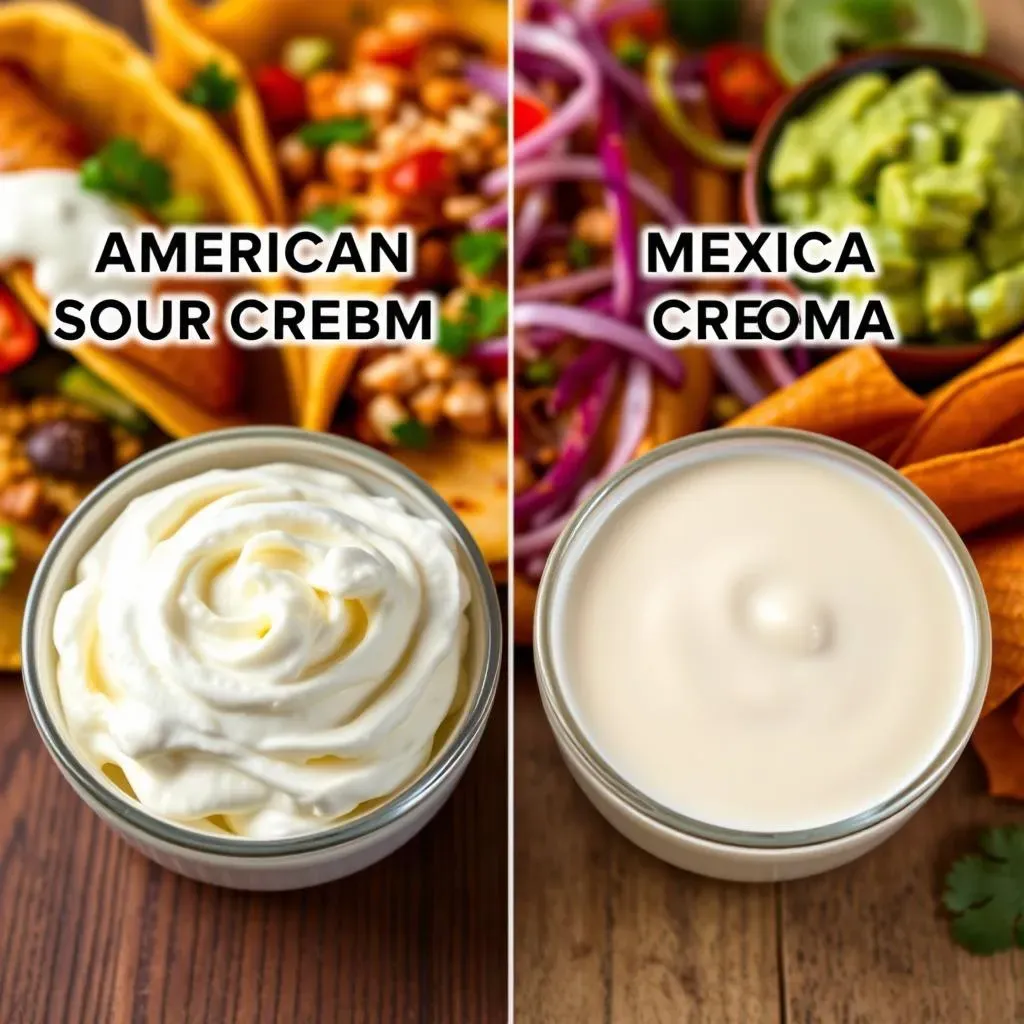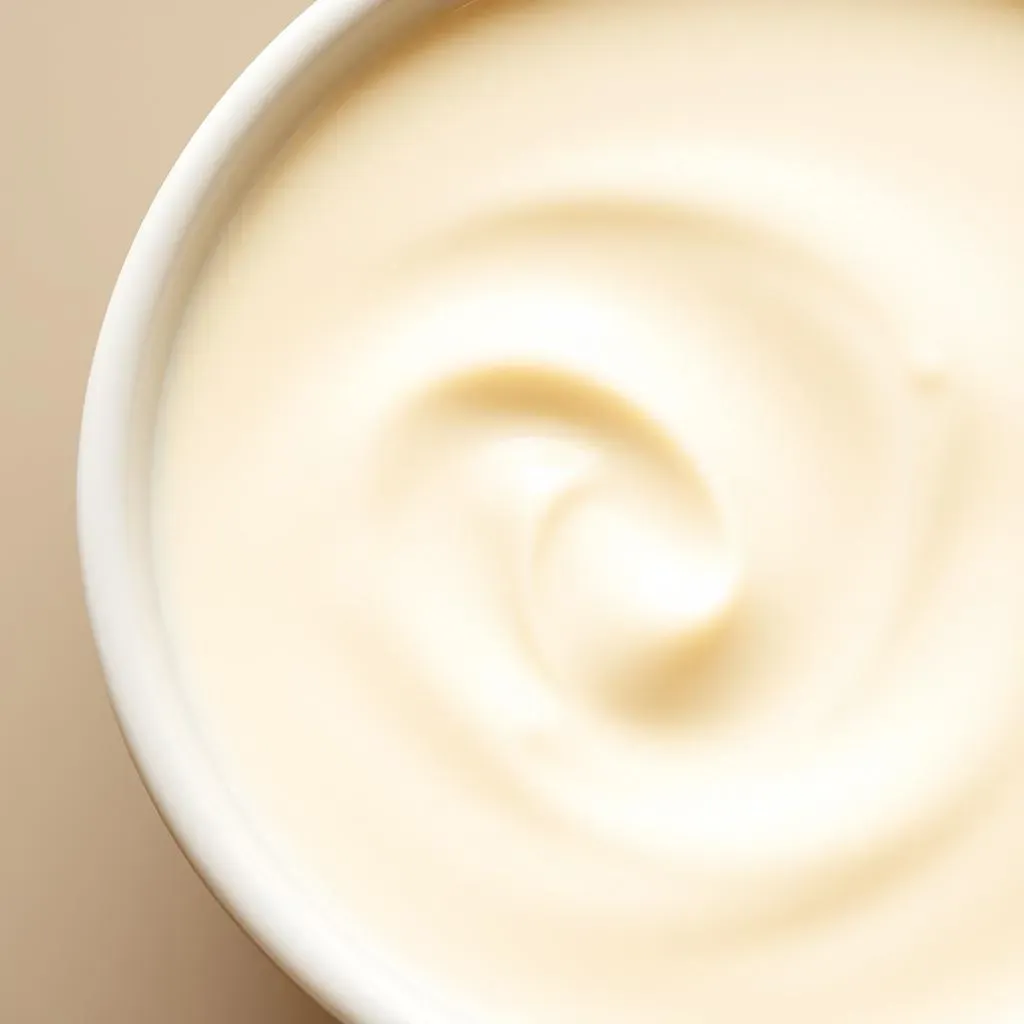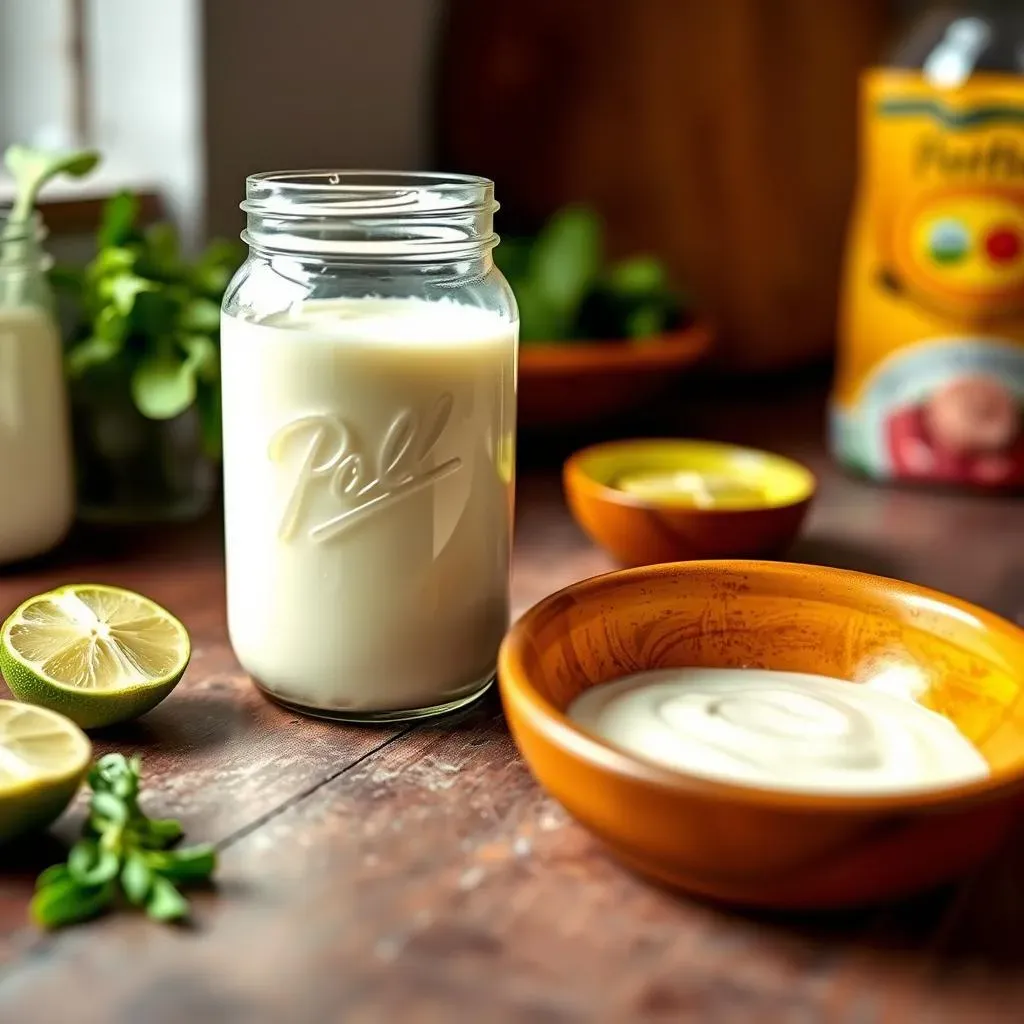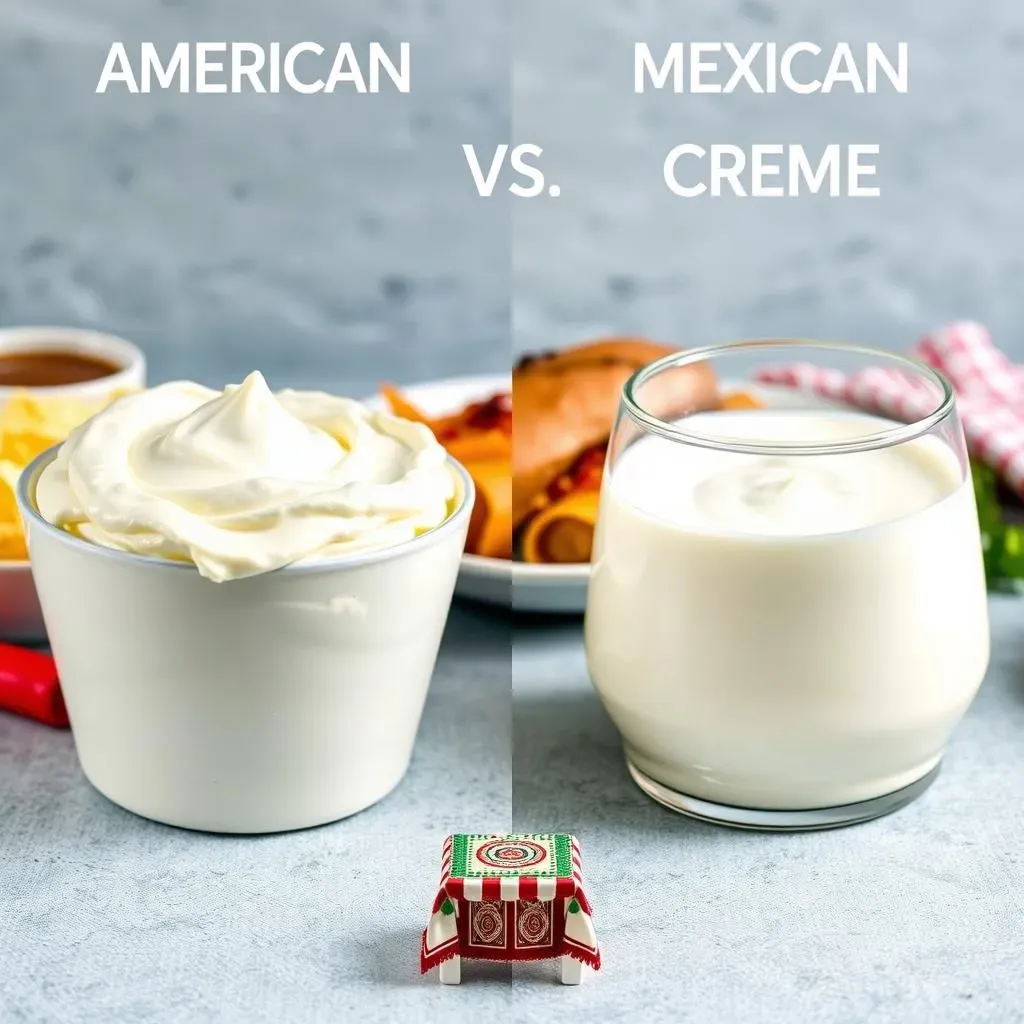Table of Contents
Okay, let's talk about sour cream. You might think you know it, that tangy dollop you get on your baked potato. But what if I told you that "sour cream" in Mexico is a whole different ball game? It's not just a simple topping; it's a crucial part of Mexican cuisine, and it might surprise you. We're going to explore the fascinating world of "sour cream in Mexico," or rather, what’s *actually* used: crema. This isn't your average dairy product; it's richer, tangier, and totally essential for authentic Mexican dishes. We'll figure out why it's not just a substitute, but a star in its own right. Get ready to ditch your preconceived notions, because we're about to uncover the creamy, dreamy truth about Mexican crema, the real sour cream in Mexico, and how you can even make it at home! So, buckle up, and let’s get started!
What's the Deal with Sour Cream in Mexico? It's Not What You Think

What's the Deal with Sour Cream in Mexico? It's Not What You Think
The Great Misunderstanding
So, you're picturing that thick, tangy stuff in a tub, right? The one you grab for tacos or nachos? Well, that's American sour cream. In Mexico, things are different. They have something called "crema," and while some folks might call it "Mexican sour cream," it's not quite the same. It's like comparing a chihuahua to a wolf; both are canines, but worlds apart. This "crema" is the real deal, and it’s used everywhere, from street tacos to fancy restaurant dishes. This isn't about just a simple swap; it’s about a whole new dairy experience.
The difference isn't just in the name; it's in the taste and texture. American sour cream is thick and has a pronounced tang, almost like it’s trying to prove how "sour" it is. Mexican crema, on the other hand, is smoother, a bit thinner, and has a milder, slightly sweet flavor profile with a hint of tang. Think of it as the sophisticated cousin of American sour cream, not as sour, but definitely more interesting. It’s like the difference between a loud rock concert and a chill jazz session; both are music, but they hit different notes.
Now, why does this difference matter? Because using American sour cream on authentic Mexican food is like putting ketchup on a gourmet steak; it just doesn't belong. It throws off the balance of flavors and doesn't give the dish the creamy, subtle tang it craves. You might think it's a small detail, but it's a big deal to any true lover of Mexican food. It’s about respecting the ingredients and the traditions behind them. It's not just about what tastes good, but also about what is *right*.
Feature | American Sour Cream | Mexican Crema |
|---|---|---|
Thickness | Thick | Thinner, Pourable |
Tanginess | Strong, Pronounced | Mild, Subtle |
Flavor | Sharp, Sour | Slightly Sweet, Creamy |
Mexican Crema: The Real Star, The Authentic Sour Cream in Mexico

Mexican Crema: The Real Star, The Authentic Sour Cream in Mexico
More Than Just a Substitute
Let's get one thing straight: Mexican crema isn't just a stand-in for sour cream; it's a star in its own right. Think of it as the secret ingredient that makes Mexican food sing. It’s the creamy, tangy whisper that elevates a simple taco to a culinary experience. You see, in Mexico, crema is as essential as tortillas and salsa. It's that final touch that brings all the flavors together, creating a symphony of taste in your mouth. It's not just about adding creaminess, it's about adding a certain *je ne sais quoi* that makes Mexican food so irresistible.
This isn't some mass-produced, overly processed stuff you find in the supermarket. The best Mexican crema is often made fresh, sometimes even at home. It's a testament to the importance of fresh ingredients and traditional methods in Mexican cooking. It's made with simple ingredients, usually heavy cream and a bit of buttermilk or lime juice, and the result is something that's both decadent and light. It’s the kind of thing you can taste the love and care in. It’s like a hug from your abuela, but in dairy form.
The Taste and Texture
The texture of Mexican crema is what makes it so versatile. It’s thinner and more pourable than American sour cream, which means it can drizzle beautifully over tacos, enchiladas, and soups. It's also less likely to clump or get too thick, making it perfect for mixing into sauces or dips. It's that perfect balance of richness and lightness that makes it a joy to eat. It coats your tongue with a smooth, velvety texture that is just… chef's kiss.
And the flavor? It's a delicate dance of creamy sweetness and a gentle tang. It’s not that aggressive sourness you get with American sour cream, but more of a subtle, sophisticated flavor that complements the other ingredients in a dish. It’s like a well-written poem, where every word is carefully chosen to create the perfect effect. This subtle tang cuts through the richness of the food, balancing the flavors and making each bite more delicious than the last. This is why it is the real sour cream in Mexico.
"Mexican crema is not just a condiment; it's an essential part of the culinary identity of Mexico." - Chef Gabriela Cámara
Where to Find It?
You might be wondering where you can get your hands on this magical stuff. Well, if you're lucky enough to live near a Mexican market, you can probably find it there. Look for it in the dairy section, often labeled as "crema Mexicana" or "crema fresca." But don't be surprised if you don't see it in your regular supermarket. That's because it's not as widely available as American sour cream. But worry not, because you can also make it at home, which we will get into next. It's like a treasure hunt, but the reward is a spoonful of creamy, dreamy goodness.
Making Your Own Crema Mexicana: It’s Easier Than Finding a Good Taco

Making Your Own Crema Mexicana: It’s Easier Than Finding a Good Taco
The Simple Magic of Homemade Crema
Okay, so you're ready to ditch the store-bought stuff and make your own crema Mexicana? Great! It’s seriously easier than you think, and the result is so much better. The best part? You probably already have most of the ingredients in your fridge. Forget about complicated recipes; this is all about simplicity and fresh flavor. It’s like learning a magic trick, but instead of pulling a rabbit out of a hat, you’re making delicious crema from scratch. It’s not just about the taste; it’s about the satisfaction of creating something amazing with your own hands.
The basic recipe involves just two main ingredients: heavy cream and either buttermilk or lime juice. That’s it! You mix them together, let them sit for a bit, and bam—crema magic happens. It’s like watching a plant grow; you put in a little effort, and nature (or in this case, dairy) does the rest. This isn't about slaving away in the kitchen; it's about enjoying the process and the delicious outcome. It’s a testament to the fact that sometimes, the simplest things are the best.
Ingredient | Amount |
|---|---|
Heavy Cream | 1 cup |
Buttermilk or Lime Juice | 1-2 tablespoons |
Salt (optional) | Pinch |
Step-by-Step: Crema Making Simplified
Let's break it down. First, pour your heavy cream into a clean jar or container. Then, add your buttermilk or lime juice. The buttermilk will give you that classic tangy flavor, while lime juice adds a brighter, fresher note. Stir it gently, just enough to combine the ingredients. Now, the hardest part: waiting. Cover the container and let it sit at room temperature for about 12 to 24 hours, or until it thickens to your liking. The longer it sits, the tangier it will become. It's like a science experiment, but the results are edible and delicious.
Once it's thickened, give it a good stir, and you’re done! You can add a pinch of salt if you want, but it’s totally optional. This homemade crema is now ready to elevate all your favorite Mexican dishes. It’s like having a secret weapon in your kitchen, ready to make everything taste a little bit better. It’s not just about following a recipe; it’s about creating something that's uniquely yours.
Tips and Tricks for Crema Perfection
Want to take your crema game to the next level? Here are a few tips. Make sure your ingredients are fresh; it makes a big difference in the final taste. If you're using lime juice, use fresh squeezed for the best flavor. Don’t rush the process; let it sit at room temperature for the full time. If you live in a warmer climate, you might find it thickens faster. Keep an eye on it. It’s like taking care of a pet; you need to give it the right conditions to thrive.
If you want to get fancy, you can also experiment with adding a bit of sour cream to the mixture. It will give you a thicker, tangier result. But honestly, the basic recipe is usually perfect on its own. It's like finding the perfect pair of jeans; sometimes, the simplest options are the best. And remember, practice makes perfect, so don't be afraid to experiment and find what works best for you. It’s not just about the end result; it’s about the journey of discovery.
“The beauty of homemade crema lies in its simplicity and the ability to customize it to your own taste.” - Anonymous Home Cook
Sour Cream vs. Crema: A Delicious Showdown in Mexican Cuisine

Sour Cream vs. Crema: A Delicious Showdown in Mexican Cuisine
The Key Differences
Okay, let’s get down to brass tacks. What’s the real difference between American sour cream and Mexican crema? It’s not just about a different name; it’s about their very essence. American sour cream, as we’ve discussed, is thicker, tangier, and has a more pronounced sour flavor. It’s like that friend who always makes their presence known. Mexican crema, on the other hand, is a bit more subtle. It’s thinner, pourable, and has a milder, slightly sweet flavor with a gentle tang. It’s like the quiet, sophisticated friend who always knows how to make you feel comfortable. This difference in flavor and texture is what makes them distinct and suitable for different culinary uses. It's not a matter of one being better than the other, but rather, each having its own unique role to play.
Think of it this way: American sour cream is like a bold, primary color, while Mexican crema is like a soft, pastel shade. Both are beautiful in their own way, but they create a different feeling. American sour cream is great for adding a punch of tang, like on a baked potato or in a dip. But Mexican crema is designed to complement and enhance the flavors of Mexican dishes, adding a creamy, subtle tang that doesn’t overpower the other ingredients. It’s about balance and harmony, like a well-composed piece of music, where every note has its place. So, when you're reaching for that dairy topping, consider the overall flavor profile you want to achieve.
Characteristic | American Sour Cream | Mexican Crema |
|---|---|---|
Thickness | Thick | Thin, Pourable |
Tanginess | High | Mild |
Flavor | Sharp, Sour | Slightly Sweet, Creamy |
Best Use | Baked potatoes, dips | Tacos, Enchiladas, Soups |
When to Use Which
Now, let's talk about usage. When should you reach for American sour cream, and when should you opt for Mexican crema? Well, if you're making a classic American dish like a baked potato with all the fixings, American sour cream is your go-to. It has that classic tangy flavor that pairs perfectly with savory and rich dishes. It’s like a trusty old friend that you can always rely on. But when you're diving into the world of Mexican cuisine, that’s where Mexican crema really shines. It's the key to authentic flavors and textures, adding that essential creamy tang that makes Mexican food so irresistible. It’s like the secret weapon that elevates every dish.
So, if you’re making tacos, enchiladas, or soups, ditch the American sour cream and reach for the crema. It’s the difference between a good dish and a truly authentic one. Think of it as using the right tools for the job; you wouldn’t use a hammer to screw in a bolt, right? Similarly, you shouldn't use American sour cream when you need the delicate, creamy tang of Mexican crema. It’s about respecting the ingredients and the traditions behind them. It's not just about what tastes good, but what is *right*, and when you use the right dairy for the right dish, you’ll taste the difference.
"The right dairy can make or break a dish. When it comes to Mexican cuisine, crema is the key." - A wise culinary enthusiast